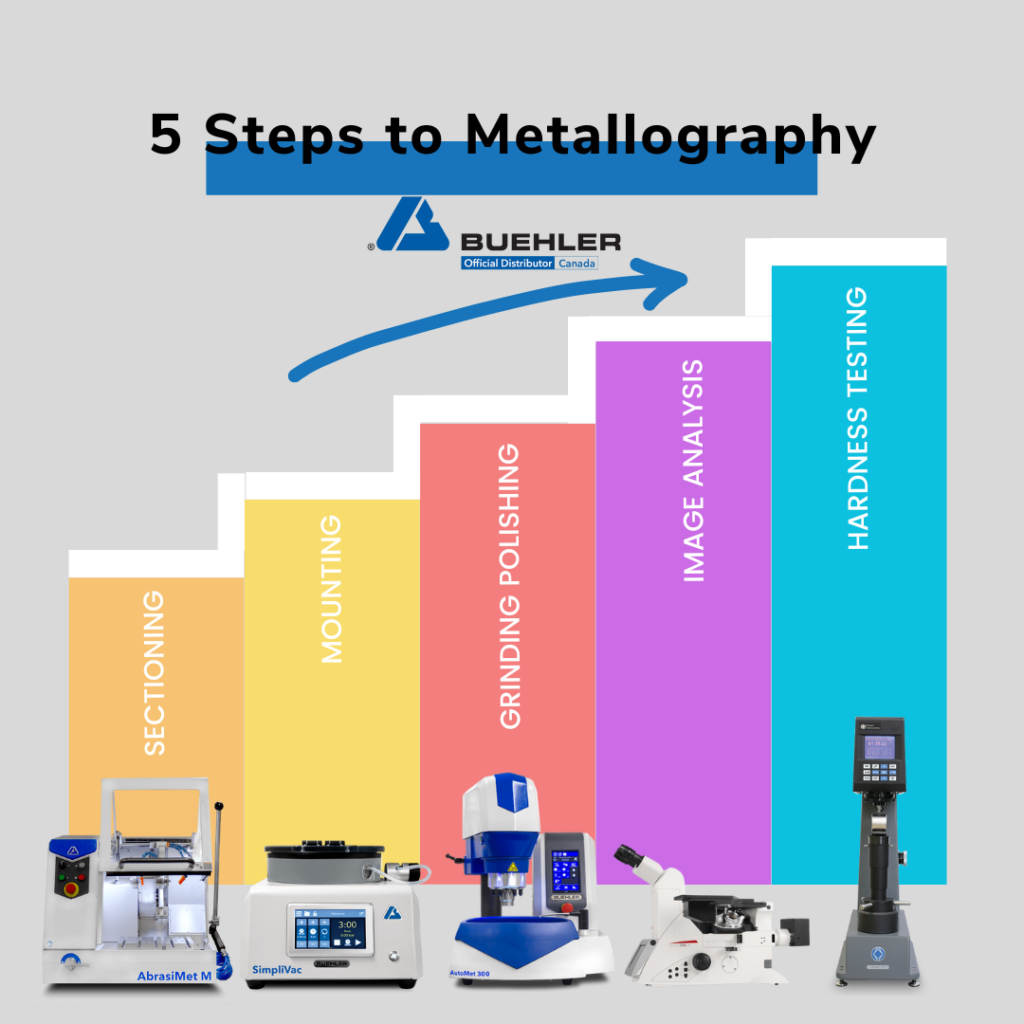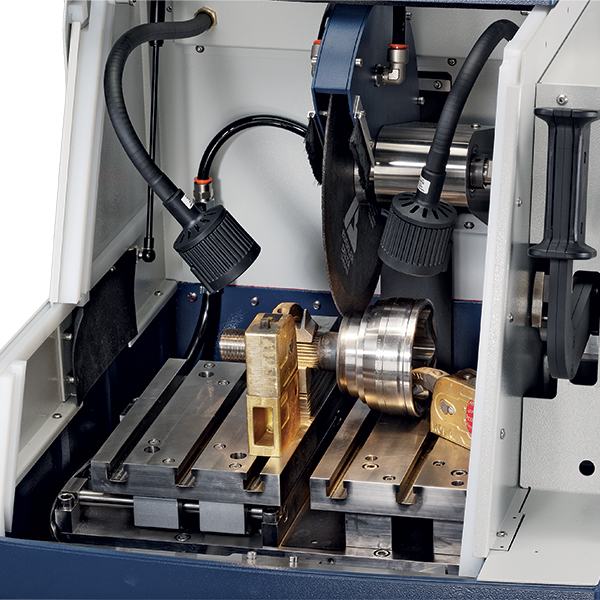Today’s technology relies heavily on engineering materials, including metals, ceramics, polymers, composites, etc. Metallography is a technique used to evaluate these engineering materials’ properties using macroscopic and microscopic methods. This discipline is essential for engineers and scientists working in industries from aerospace to automotive to electronics, education and research, as it provides critical information on the microstructure of these materials. The microstructure is the arrangement of the metal’s grains and crystals, which is crucial in determining the metal’s properties, such as strength, toughness, hardness and corrosion resistance.
Steps in metallography
The first step in metallography is sectioning, which involves cutting a piece while introducing minimal heat and deformation to be used as a sample. This sample should represent the material’s area of interest to prepare it for microstructural analysis.
Once the sample has been sectioned, the next step is mounting. Samples are mounted for several reasons: to maintain flatness, to stabilize small pieces, to aid in automated preparation and for ease of handling. Mounting materials include phenolics, epoxies and acrylics.
Once mounted, the sample must be ground and polished to reveal the microstructure beneath the surface. During grinding, progressively finer abrasives are used until all deformation caused by sectioning and coarser grinding has been removed. The polishing process is similar to grinding but uses finer abrasives, such as diamond suspensions, applied to a polishing cloth surface to remove surface defects further.

After the sample or specimen has been ground and polished, it is ready for examination using a light optical or electron microscope. Frequently samples are examined as-polished to reveal inclusions, porosity, and coating layers or for micro indentation hardness testing.
Chemical etching of the sample will enable the observation of grain structure, heat treatment condition, flow lines, etc. Etching is the most commonly applied technique to produce microstructural contrast. The etchant reacts with the specimen surface by attacking the grain or phase boundaries revealing the material microstructure.
Why is metallography important?

Metallography is vital in material science and engineering because it sheds light on the characteristics and functionality of metals and alloys and explains how a material’s microstructure impacts its mechanical, electrical, and thermal properties. The knowledge gained through metallography is used to advance scientific research and development, enhance the quality control of metal materials, and optimize the design and manufacture of metal parts and products.
Metallography and the microscope
Microscopic techniques require a more complex step, including mounting the metal sample to a resin mould. Once the metal sample and resin mould have been joined, the specimen is ready for cleaning and polishing. This is done more thoroughly than for macroscopic samples due to the microscope’s magnification.
Metallography requires precision and specialized equipment, which is where companies like Opti-Tech come in. Established in 1989, Opti-Tech specializes in a wide range of state-of-the-art products and equipment necessary for this field of study. We stock an extensive range of microscopes, including digital, stereo, upright compound, and inverted compound microscopes and all of your metallographic sample preparation equipment and consumables. We keep consumables at our Whitby, Ontario warehouse for quick shipments of Canadian customers’ most well-loved and quality consumables.
Opti-Tech understands the importance of having the right tools and services for successful metallography. That’s why, besides our extensive range of products, we offer several value-added services to meet your needs. Our Preventative Maintenance program is designed to optimize the performance and longevity of your equipment, and the repair service ensures that your equipment is quickly restored to working condition. We also provide expert calibration services for NIST standards as we work towards becoming ISO 17025 in 2023.
The most valuable service is the Microscopy Product Set-Up and Training. With this service, our technical specialists will set up your new instrument to the highest standards and provide on-site training customized to your needs. This ensures you get the most out of your investment, enjoy a more productive and efficient experience, and are supported in every aspect of your scientific research and work.
Learn More by watching Buehler’s What is Metallography? Webinar.
